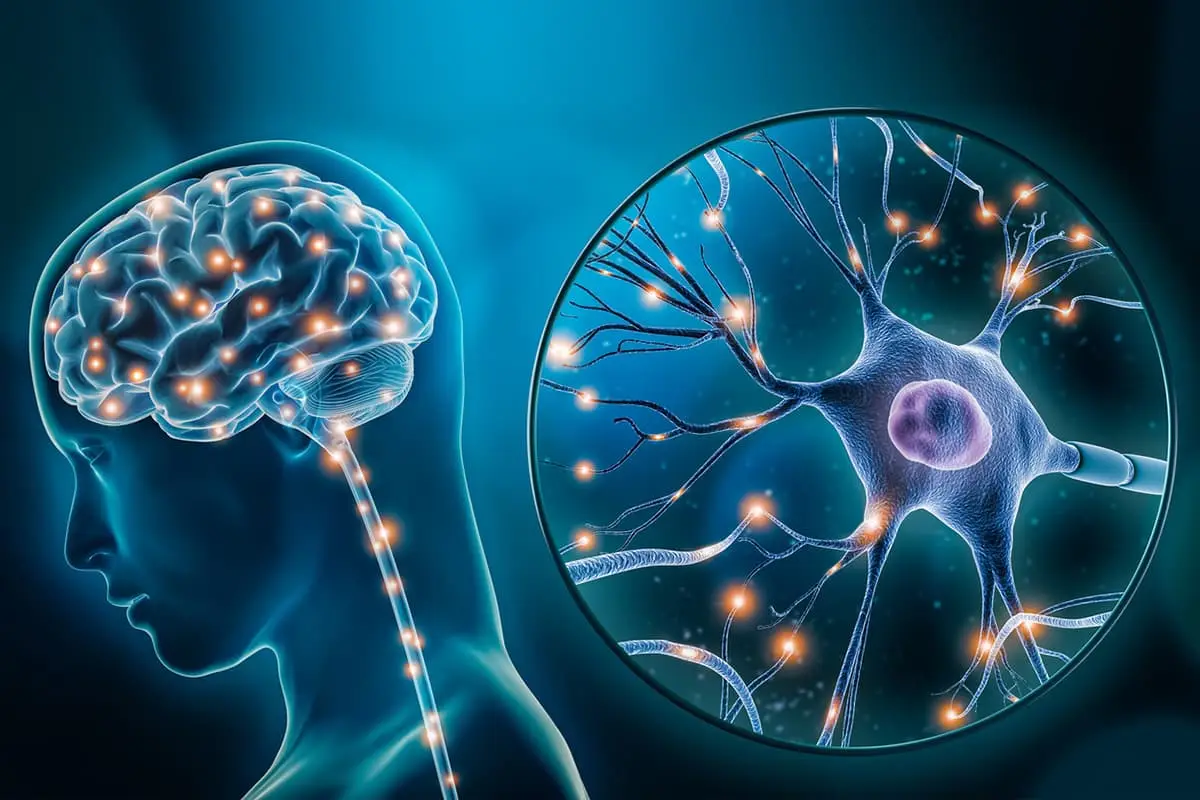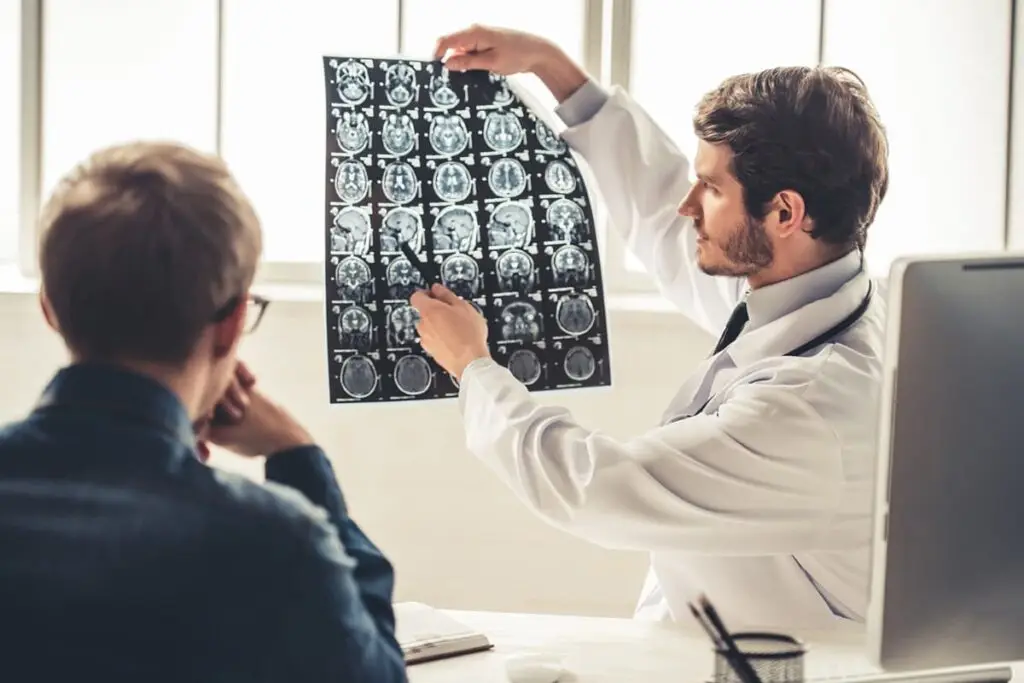Advances in mental health research show that healthy brain functioning is at the core of successful treatment and long-term recovery from mental health and substance use disorders.
Dysregulations in the firing rates of neurons (nerve cells), patterns of certain brain waves, and imbalances in neurotransmitters/brain chemicals are often the underlying causes of many psychological and psychiatric disorders, including addiction.
For this reason, we leverage brain-based treatment methodologies and state-of-the-art technology to effectively give you the tools to overcome your psychological disorders and/or drug addiction now and long after you’ve left our facility. Our goal is to make long-lasting recovery as easy and effective as possible by targeting your body’s control center (i.e., your brain).
As one of the region’s leading neuroscience and brain-based treatment centers for mental health and substance use disorders, we focus on objective, evidence-based approaches to helping our clients get better and stay better. One way we achieve this at VCAT Treatment Center is by using Visual Concentration Attention Therapy (VCAT).

Visual Concentration Attention Therapy (VCAT) is a non-invasive Visual Field brain stimulator and neuropathway therapy developed, researched, and maintained by our founder Dr. Nader Siahdohoni. And as you can guess, this revolutionary treatment is the basis of our center’s name—and deservedly so.
VCAT is arguably the most precise treatment for relieving the symptoms of neuropsychological, psychological, and substance use disorders. It is effective, quick, and safe. This cutting-edge neuropathway therapy has also been shown to be an excellent way to improve overall mental and cognitive health.
VCAT is a one-of-a-kind brain training technology that uses a variety of therapeutic patterns and strategies to enhance the brain’s functioning. It helps regulate neural network dysfunction and chemical imbalances caused by traumatic brain injuries, substance abuse, or disease.
More specifically, the neuroscience-based treatment uses the therapeutic theories of Attentional Stimulation, memory tracking, and Neural Networks to stimulate dysregulated or affected brain areas from the Visual Field (VF).
The direct attentional stimulation of the brain can improve the symptoms of a wide range of mental health issues—including addiction, mood disorders, ADHD (Attention-Deficit/Hyperactivity Disorder), seizures, dual diagnosis, and schizophrenia, among others.
VCAT is a sophisticated form of neuropathway therapy based on comprehensive research by some of the world’s leading neuroscientists and psychologists.
According to quantitative research by Dr. Nader Siahdohoni and hundreds of pilot, empirical, and evidence-based studies, VCAT could be an effective way to address the underlying cause of many psychological disorders and addiction.
But how does it work? What makes VCAT unique and one of the best treatment modalities to overcome the effects of addiction and other mental health disorders?
To understand how VCAT works, we must take a step back and look at how the brain functions.
Visual Concentration Attention Therapy focuses on how the brain works and explains behavior characterizing mental and substance use disorders in terms of brain activity.
The brain is a powerful and remarkable organ that contains 86 billion nerve cells (neurons), each having about 7,000 synaptic connections (circuits) with other nerve cells. The neural circuits can be likened to the electric wiring you’d see in a vehicle or building.
Neural circuits are the paths through which the information received from our environment is interpreted and transferred. They link sensory inputs (via sensory neurons that carry information from sense organs to the brain) and motor outputs (via motor neurons that carry messages from the brain to the muscles) with different areas of the brain.
Neurons use chemical (neurotransmitters) and electrical signals to transmit information between the brain and body and different areas of the brain. The electrical activity and level of brain chemicals in healthy people lie within certain normal ranges. But this can change.
Research shows that the brain’s chemistry and electrical activity can be dysregulated by external or internal factors—giving rise to substance abuse disorders, mood disorders, learning disabilities, and other brain disorders. The most easily noticeable discrepancies are imbalances in neurotransmitters that function as inhibitors or stimulants in the neurological system.
For example, excessive consumption of alcohol can trigger the release of stress hormones and deplete the brain’s natural resources of dopamine (“feel-good” or “reward” hormone) and GABA (inhibitory neurotransmitter).
Likewise, depression is a symptom of imbalances in the brain’s chemistry. Depressed individuals tend to have lower levels of the “well-being” neurotransmitter serotonin, dopamine, and GABA. And in people with schizophrenia, there may be disruptions in the neurotransmitters glutamate, dopamine, and norepinephrine.
VCAT is designed to improve attention, concentration, perception, cognition, and memory by promoting effective communication between neurons and functional centers in the brain and sensory-motor system. It targets the brain’s malfunctioning areas (overactive, underactive, non-active) and stimulates the brain’s circuitry through neurocognitive stimulation within the Visual Field (VF).
A key part of how VCAT works is based on the brain’s ability to change and reorganize its connections, functions, and structure in response to stimuli (i.e., neuroplasticity). And even after the brain is conditioned to the VCAT’s treatment, we believe it can self-train and automatically compute VCAT principles in real-life daily practice.
Neuroplasticity describes the processes of synaptogenesis (formation of new connections between neurons) and neurogenesis (growth of new neurons). The brain can continually adapt and rewire itself to compensate for disease, the effects of substance abuse, injury, or environmental changes.
The mental and cognitive stimulations from Visual Concentration Attention Therapy produce higher plasticity by building stronger communication, connections, and functioning within your brain’s neural networks.
VCAT increases oxygenated blood flow throughout the brain, enhances the frequencies of brain waves to increase cognitive abilities, promotes sustained attention, and encourages the regulation, restoration, and healthy balance of neurotransmitters. These are the mechanisms that underly addiction, anxiety, depression, ADHD, and many other psychiatric disorders.
As a brain training modality, VCAT challenges your brain to learn new tasks through science-based systematic patterns that enhance neuroplasticity based on visual stimulation. Regular “exercising” using VCAT may also help delay the progression and onset of Alzheimer’s and other neurodegenerative diseases caused by substance abuse or brain injury.
Did you know that your eyes are an extension of your brain? And that the Visual Field (VF) is a reflection of your brain? The visual system (including the Visual Field) is intimately connected to the brain—and can be used as a therapeutic avenue to train the brain and restore balance.
Light coming in through your eyes can enhance your endocrine and nervous system function. Receptors in the retina send electrical messages to the visual cortex, pineal glands, and hypothalamus for further processing.
With this in mind, VCAT addresses dysfunctions within these electrical activities using two Treatment Diagram Platforms:
The VCAT Treatment Plan for mental health and substance abuse disorders typically progresses through different levels of treatment to precisely balance brain waves, rejuvenate neural networks, and regulate chemical imbalances in the brain’s functioning system.
The VCAT treatment process begins with an in-depth assessment to guide our treatment approach. It includes real-time monitoring of your brain’s response and performance using brain mapping and a wireless EEG headset.
Our state-of-the-art qEEG brain mapping technology is a revolutionary tool that takes the guesswork out of the assessment process. It provides an accurate roadmap that helps us identify parts of the brain that are non-active, underactive, or overactive.

The brain mapping and wireless EEG readings are then compared with results from self-assessment tests, including checklists, questionnaires, and personal interviews.
We use this comprehensive diagnostic data to customize a precise individualized VCAT treatment plan that suits your particular psychological or substance use disorder.
VCAT treatment sessions aim to balance and address malfunctioning areas of the brain through a number of “exercises” such as shifting attention from one object to another, gazing based on attentional cueing, and gaze cueing combined with body part movements, among others.
This is followed by post-treatment evaluation and maintenance based on individual feedback and reviews of the real-time brain mapping and recorded EEG results.
If you or a loved one is struggling with a mental health or substance use disorder, Visual Concentration Attention Therapy (VCAT) could be an effective solution. It’s a non-invasive and effective way to address the underlying cause of many psychological disorders for long-lasting recovery. Think of it as a tool to make your recovery easier, faster, and more sustainable.
Copyright 2022 VCAT Treatment Center. Privacy Policy | Site Map